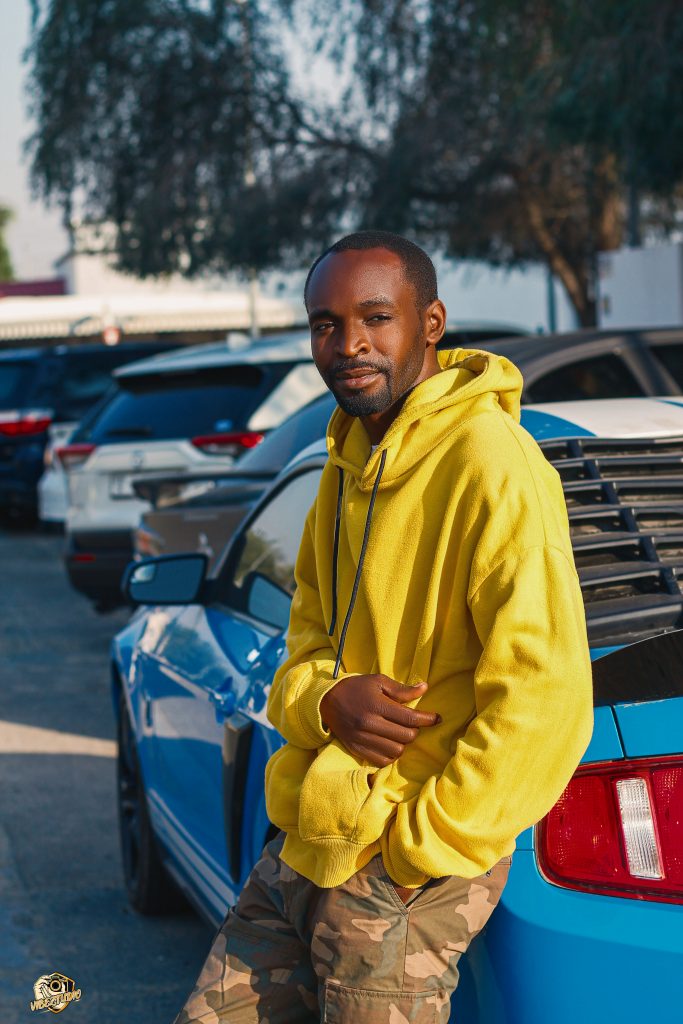Table of Contents
Photography is an art form that thrives on the interplay of light and shadow, color and tone. One of the key elements that photographers use to create visually compelling images is contrast. I will walk you through all you need to know about contrast in photography, exploring what it is, why it’s essential, and how you can use it to enhance your photos. Stick to the end and I will also share 10 creative ideas to spice your pictures with using contrast.
What Is Contrast in Photography?
Contrast in photography refers to the difference between the lightest and darkest parts of an image. It’s the dynamic range of tones that gives an image depth and dimension. Contrast means more than just a play of light and shadows, it tells the difference between the tones, colors, and textures of a photo. Contrast can manifest in various ways:
- Luminance Contrast: This type of contrast deals with the difference in brightness between elements in an image. It’s what makes shadows appear dark and highlights appear bright.
- Color Contrast: This involves the closeness of different colors in an image. Complementary colors (those opposite each other on the color wheel) create powerful color contrast.
Why Is Contrast Important in Photography?

Contrast is essential because it brings life to your pictures. It’s like turning up the volume on the emotions your photos convey. When you have contrast, you can make things stand out, like a bright flower against a dark background.
Contrast can evoke powerful emotions in your audience. High contrast images with bold shadows can create a sense of drama and tension, while low contrast photos can evoke feelings of calm and serenity. By controlling contrast, you can influence the emotional response to your work.
What Does contrast in photography Do?
So, what exactly does contrast do in a photograph? Let’s see the effects it has on your images:
Enhancing Details

Contrast is like a spotlight for the details in your photo. It emphasizes the textures, patterns, and intricate elements that might otherwise go unnoticed. For instance, the rough texture of an old tree’s bark becomes prominent when contrasted with the softness of nearby leaves.
Defining Edges

Contrast plays a crucial role in defining the edges of objects and subjects in your photos. It separates elements from their surroundings, making them stand out distinctly. This edge definition is especially important in portrait photography, where it highlights facial features and expressions.
Types of Contrast in Photography
Low Contrast Photography

Low contrast photography involves minimal differences between light and dark tones. It often creates a softer, more subtle atmosphere. Low contrast images have more middle tones and are more about differences in the tonal range. For example, low contrast images usually include black and white pictures with quite a bit of grey in them, instead of just pure black and white.
Here’s what you need to know:
When and Why to Use Low Contrast
Low contrast is ideal when you want to convey a sense of tranquility or when you’re capturing delicate subjects like newborns. It minimizes harsh shadows and can be flattering in portrait photography.
High Contrast Photography

High contrast photography, on the other hand, amplifies the difference between light and dark areas, creating bold, impactful images. A high-contrast image has a wide range of tones full of blacks and whites with dark shadows and bright highlights. These images will have intense colors and deep textures creating stunning images.
Consider the following:
Impact on Drama and Mood
High contrast is perfect for adding drama and intensity to your photos. It’s often used in genres like street photography to capture the grit and energy of urban life.
Achieving High Contrast
To achieve high contrast, look for scenes with strong natural light or use artificial lighting to cast deep shadows. Shooting during the “golden hours” (early morning or late afternoon) can also create naturally high contrast scenes.
Learn more about High Contrast for beginners.
Contrast Photography in Black and White

Black and white photography relies heavily on contrast to create compelling images. Shades of gray take center stage, emphasizing the importance of luminance contrast.
Techniques for Striking Contrast

In black and white photography, pay attention to lighting and composition. Strong directional lighting can produce bold shadows and highlights, while leading lines and framing techniques can enhance contrast and create visual interest.
Color Contrast in Photography

Color contrast is a fascinating aspect of photography that can make your images pop with vibrancy and energy. To use color contrast effectively in your photos, you need to know how color influences the other when placed next to it
Complementary Colors
To maximize color contrast, look for complementary colors—those that sit opposite each other on the color wheel. Red and green, blue and orange, or purple and yellow are classic examples. When placed side by side, these colors intensify each other, creating a dynamic visual impact.
Storytelling with Color
Use color contrast to tell stories within your photographs. For instance, a lone red umbrella in a sea of gray can symbolize hope or isolation, depending on the context.
Understanding Value in Photography Contrast
In photography, value refers to the lightness or darkness of a specific area in your image. Understanding value is essential for mastering contrast. There can be high contrast (a big difference between light and dark) and/or low contrast (not a big difference between the light and dark)
Value’s Contribution to Contrast

Value plays a significant role in creating contrast. Dark values placed side by side with light values can lead to striking images, while mid-tones can provide balance and harmony.
Working with Value
To effectively work with value, experiment with different lighting conditions and post-processing techniques. Adjusting exposure, contrast, and brightness in post-production can help fine-tune the values in your photos.
Contrasting Colors and Tones in Photography

Combining contrasting colors and tones in your images can lead to visually captivating results.
read more for contrast techniques for food photography.
Interplay of Colors and Tones
Look for scenes where colors and tones contrast naturally. For instance, a bright red object against a dark green background can create a captivating visual dynamic.
Using Contrasting Colors and Tones
Experiment with composition to make the most of contrasting elements. Consider the rule of thirds, leading lines, or the golden ratio to guide the viewer’s eye through the contrasting elements in your photograph.
Low Contrast vs. High Contrast
| Aspect | Low Contrast | High Contrast |
| Definition | Minimal difference between light and dark tones. | Amplified difference between light and dark tones. |
| Atmosphere | Soft, gentle, and subtle. | Bold, intense, and dramatic. |
| Shadows and Highlights | Smooth transitions between shadows and highlights. | Stark, well-defined shadows and highlights. |
| Mood | Calm, serene, and peaceful. | Energetic, tense, and dynamic. |
| Subjects | Ideal for delicate subjects like newborns or soft landscapes. | Suitable for subjects with strong shapes, textures, and emotions. |
| Lighting | Often involves diffused or even lighting. | Requires strong directional lighting or extreme lighting conditions. |
| Post-Processing | May require adjustments to increase contrast. | May involve adjustments to enhance or balance contrast. |
| Common Genres | Portrait photography, certain landscapes. | Street photography, urban scenes, and high-impact images. |
To master contrast in photography, it’s essential to understand when to use low contrast and when to go high.

Micro-Contrast vs. Global Contrast
- Micro-Contrast: This refers to the contrast between small details within an image, such as the fine texture of skin or the intricate details of a flower petal.
- Global Contrast: In contrast, global contrast affects the overall look of an image by influencing the relationship between the brightest and darkest areas.
Enhancing Micro and Global Contrast
- Micro-Contrast: Use high-quality lenses and post-processing techniques like sharpening and clarity adjustments to enhance micro-contrast.
- Global Contrast: Adjusting exposure, contrast, and tone curves in post-processing can help you fine-tune global contrast to achieve the desired mood and impact.
10 Creative Ideas for Using Contrast in Your Photography
As promised here are 10 creative ideas to up your photography game using contrast:
1. Silhouettes against Bright Backgrounds
Capture subjects as dark silhouettes against a bright background, such as a fiery sunset or a brightly lit window. This creates a striking contrast between the subject and the background.
2. Macro Contrast
Zoom in on small details and textures to emphasize the contrast between intricate patterns, like the rough texture of tree bark against the smoothness of a leaf.
3. Play with Shadows
Experiment with the play of shadows and light to create dramatic scenes. Use objects or people to cast interesting shadows that interact with the environment.
4. Reflections and Mirror Images
Utilize reflections in water or glass surfaces to create mirror-like images that juxtapose reality with its mirrored counterpart.
5. High Key Portraits
For portraits, employ high key lighting to create a bright, almost ethereal atmosphere while maintaining a strong contrast between the subject’s features and the background.
6. Low Key Portraits
Conversely, use low key lighting for portraits to emphasize shadows and create a moody, dramatic effect with high contrast between light and dark areas.
7. Color Contrast with Complementary Colors
Experiment with complementary color schemes, such as red and green or blue and orange, to create vivid color contrasts that make your subjects pop.
8. Contrasting Textures
Look for subjects or scenes where you can emphasize the contrast in textures, such as photographing a smooth, shiny object next to something rough and weathered.
9. Movement and Stillness
Capture moments where there’s a stark contrast between movement and stillness. For example, photograph a fast-moving subject against a static background, highlighting the dynamic nature of the scene.
10. Natural vs. Artificial Light
Mix natural light with artificial light sources, like neon signs or street lamps, to create intriguing contrasts in lighting that can add depth and interest to your photos.
Incorporating these creative ideas into your photography toolkit will help you master the art of contrast and produce captivating images that resonate with your viewers.

Just remember that no particular form of contrast is better than the other. It all depends on your style.. Whether you’re capturing breathtaking landscapes, intimate portraits, or street scenes bustling with life, understanding and harnessing contrast will enable you to create images that leave a lasting impression. So, go out there, experiment, and let contrast be your friend in your photographic journey. So go hit that Shutter button!!!

